4 Crossover Comparison: 2018 Honda CR-V Vs Nissan Rogue Vs VW Tiguan Vs Chevrolet Equinox

We get it: People like crossovers. They like funky-looking ones, reliable ones, fuel-efficient ones, high-tech ones, fun-to-drive-ones, and even spacious ones. It seems every week, we get word of another new crossover on the way, giving consumers more choice than ever.
This past year, we saw the 2018 Honda CR-V float to the top, beating out most competitors with its great pricing, fuel economy, technology, and other boring but important stuff like space, practicality, and comfort. It was consistently one of the most well-rounded picks in the segment, but oddly enough, it’s not the bestselling CUV on the market.
CUV shoppers this year have been leaning towards the Nissan Rogue, a crossover that sticks to a similar formula as the Honda CR-V. That means it’s spacious, fuel efficient, and has great value. There’s also the added appeal of the Rogue’s Star Wars tie-in that makes it popular with kids and young-at-heart sci-fi fans.
The hive-mind at AutoGuide.com figured that these two cars were long overdue for a comparison. With the CR-V as our Utility Vehicle of the Year pick last year and the Rogue selling out, it seemed like a matchup that shoppers would be itching for.
But then we got a call from VW and Chevrolet telling us that they wanted in on this throwdown. The Volkswagen Tiguan and the Chevrolet Equinox are both all new for 2018 and they both bring a lot to the table.
Examining the Honda CR-V
First, let’s recap what made the CR-V such a hit with us for the past few years. While the exterior design didn’t get us excited, the practicality, powertrain, and packaging (the three Ps) do the trick.
The spaciousness is hard to beat. Not only is there 39.2 cubic feet of storage in the trunk, but rear seat passengers are treated properly with 38.3 inches of headroom and over 40 inches of legroom. There’s a ton of space for everything too, with a giant storage area in the car that can hold all kinds of things like phones, tablets, laptops, toys, tissues and more. There are USB charging ports in that bin, and there’s some in the second row as well. And when you’re not using those rear seats, folding them down opens up a total of 75.8 cubic feet of storage. We did have some issues trying to get the trunk to open with the foot activated feature, however.
The interior is also inviting with nice leather seats and faux wood trim. The layout is logical and the infotainment system is hard to fault, responding nicely to touches and even having Android Auto and Apple CarPlay support. Helping the car feel modern and new, there’s a high-tech digital dashboard and helpful driver’s aids including lane-keep assist, forward collision warning, blind-spot monitoring, and adaptive cruise control.
The CUV’s driving dynamics are pretty much what you’d expect. It has great steering response and handles well. It’s just right for the average commute of crossover buyers.
The 1.5-liter turbocharged four-cylinder is paired with a CVT and the combination is extremely efficient. It earns the best fuel economy out of this group. It’s the best all-around powertrain here with a good mix of smoothness combined with nice torque. It’s a bit boring to drive, but when it costs just $35,025, the CR-V does everything its supposed to and at a good price.
The Popular Nissan Rogue
But crossover shoppers who didn’t buy a CR-V might have found a better deal with the Nissan Rogue. It’s certainly got a lot going for it and follows Honda’s strategy closely. It also has a priority on space and features and wraps it up for a reasonable $35,040.
It’s marginally more expensive than the CR-V, but comes with much of the same upsides. It’s extremely spacious, boasting 39.3 cubic feet of storage in the trunk, a smidge more than the CR-V, but when you fold those rear seats, you get only 70 cubes back there. A nice consolation is that the rear seats fold 40/20/40, so you can slide some longer items like skis or snowboards between two rear passengers. The trunk also has a neat shelf that can be used to divide and manage the cargo area. It’s innovative and something that no other car in this group has.
Sadly, the rear seat space is a bit behind the Honda as well, but the interior is an otherwise hospitable place. It might not have the modern look and feel of the CR-V, but I do like the stitching on the steering wheel, which feels really good in your hands.
The infotainment system is dated and uses a seven-inch touchscreen that has about the same screen-estate as most smartphones. It does have Android Auto and Apple CarPlay, which helps things a bit, but it doesn’t feel as intuitive or quick to respond as the other systems in the group.
The Rogue also feels dated in some aspects of the drive. A 2.5-liter four-cylinder engine is found under the hood and it’s the only engine here that isn’t turbocharged. It makes 170 horsepower and 175 lb-ft of torque, meaning it lacks a lot of the punch that the rest of the cars here have. It’s smooth and fairly quiet, though. Paired with a CVT, the Rogue is also quite fuel efficient, earning a combined 27 mpg.
The suspension setup is soft as well, more so than the CR-V, and makes good work out of turning potholes into mild thumps. The steering is also lifeless, but these are crossovers and a muted feel in your hands may be a selling feature to some buyers or a drawback to others.
New CUV on the Block: VW Tiguan
It’s easy to see why so many buyers opted for one of these two cars, but there’s a whole crop of new and updated crossovers hitting the roads now, and none are more eye-catching than the new VW Tiguan.
Now entering its second generation, the Tiguan is riding on the MQB platform that underpins the majority of the German automaker’s vehicles. At first glance, there’s a lot to like here. The Tiguan looks nice and has some flashy interior technology. I like the big infotainment system, which is packed full of features and has smartphone support as well, but the bigger story is the digital dashboard.
The seats are aggressively bolstered, which can make entering and exiting the vehicle difficult, but once you’re in, the seats are comfortable and supportive. In the rear of the vehicle, the Tiguan boasts the most amount of headroom and when you fold the rear seats down, the VW is second only to the CR-V in terms of cargo volume.
However, beyond that, the Tiguan is lacking in a few key areas. Materials and fit and finish are a sore spot, and the VW never feels like its trying to punch above its weight class.
The ride in particular is hard to live with. It’s stiff and uncomfortable and only feels composed on the most perfect of pavement surfaces. Everything feels a little jittery and unrefined and leaves you less confident about the VW’s drive.
The powertrain could also be better. A 2.0-liter turbocharged four-cylinder engine does the grunt work and provides 184 hp and 221 lb-ft of torque. Those numbers sound good and they do leave a strong first impression when you put your foot into it, but in more mundane driving, the eight-speed automatic is unpredictable and can go gear hunting on you, never really accelerating at a pace you want.
It delivers the worst fuel economy of this quartet at 23 mpg and is at least $3,000 more than the two Japanese rivals. Uncomfortable and expensive is a bad combination, but the Tiguan can appeal to those looking for space and technology.
And the Powerhouse that is the Chevrolet Equinox
The last car in this group is the Chevrolet Equinox, another all-new model that has a lot to like. The big story is how Chevrolet blows these competitors away in terms of powertrain. The 2.0-liter turbocharged four-cylinder engine makes 252 hp and 260 lb-ft of torque, which is above and beyond the rest of the cars here. It’s powerful, smooth and satisfying. The transmission also features “more” with 9 forward gears to choose from. It’s decisive with its gear selections and gets you going quickly, then settles in at a low rpm for cruising.
It allows the crossover to be quiet too, and the Equinox is surprisingly refined in terms of noise and vibrations. The steering is nicely weighted and the car has a ride that’s on par with what you’d find in the Rogue and CR-V. It’s comfortable and easy to get used to, unlike the Tiguan. It feels smaller and more spritely to drive as well.
Adding to the appeal, the Equinox is loaded with cool technology and fits into the modern connected lifestyle. There are several USB charging ports and even a handy three-prong plug in the rear passenger area that will surely find a use. Buyers can also opt for OnStar’s 4G LTE internet connectivity and the car’s on-board WiFi access to provide even more connectivity options. The infotainment system is excellent and also features Android Auto and Apple CarPlay support.
But look beyond the shiny features and you’ll see that the Equinox falls short in a number of ways. Not only is the interior somewhat disappointing in terms of fit and finish, but the space available in the vehicle is lacking. The vehicle has the least amount of cargo room and doesn’t set any standards in terms of passenger space.
This is all more difficult to accept because the Equinox is the most expensive vehicle of the group, and while that powertrain is a lot to get excited about, the rest of the car seems to miss the mark when it comes to delivering a handy family vehicle.
In the end, only one car from these four can emerge as the top choice. The Tiguan doesn’t make the cut because it lacks the refinement and efficiency needed in this class. The Equinox is more refined in terms of drive and packs a lot of power, but is also inefficient and lacks space. The Rogue is comfortable, spacious and efficient, but its powertrain leaves a bit to be desired. That leaves the CR-V as the still-reigning champ of the segment.
The Verdict: 4 Crossover Comparison
The Honda CR-V is affordable and efficient while boasting a ton of space for passengers and cargo. It also has a punchy powertrain and a good amount of features to round out its positives. It’s hard to find fault in Honda’s crossover, which is why we’d take it as our top choice in the segment.

Sami has an unquenchable thirst for car knowledge and has been at AutoGuide for the past six years. He has a degree in journalism and media studies from the University of Guelph-Humber in Toronto and has won multiple journalism awards from the Automotive Journalist Association of Canada. Sami is also on the jury for the World Car Awards.
More by Sami Haj-Assaad



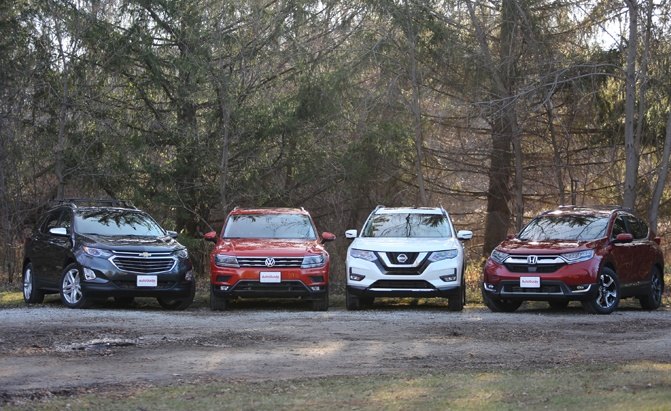

























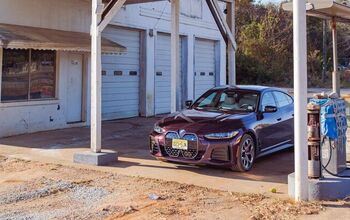



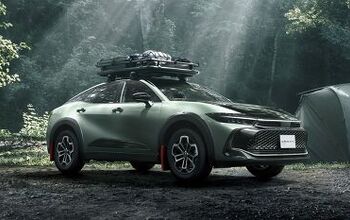
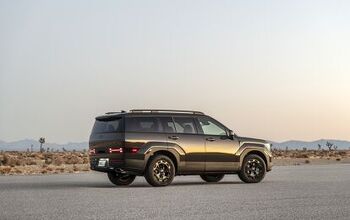
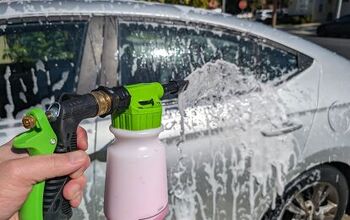

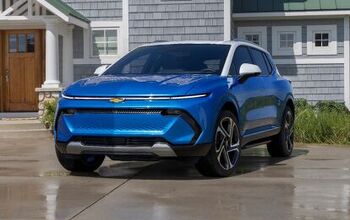
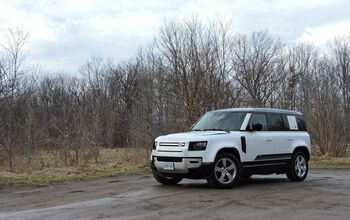



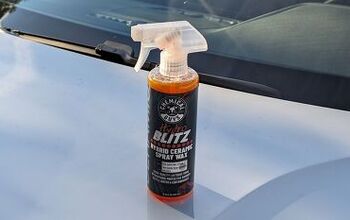
Comments
Join the conversation
Fk you and the faggoty Honda
Love my Honda's.